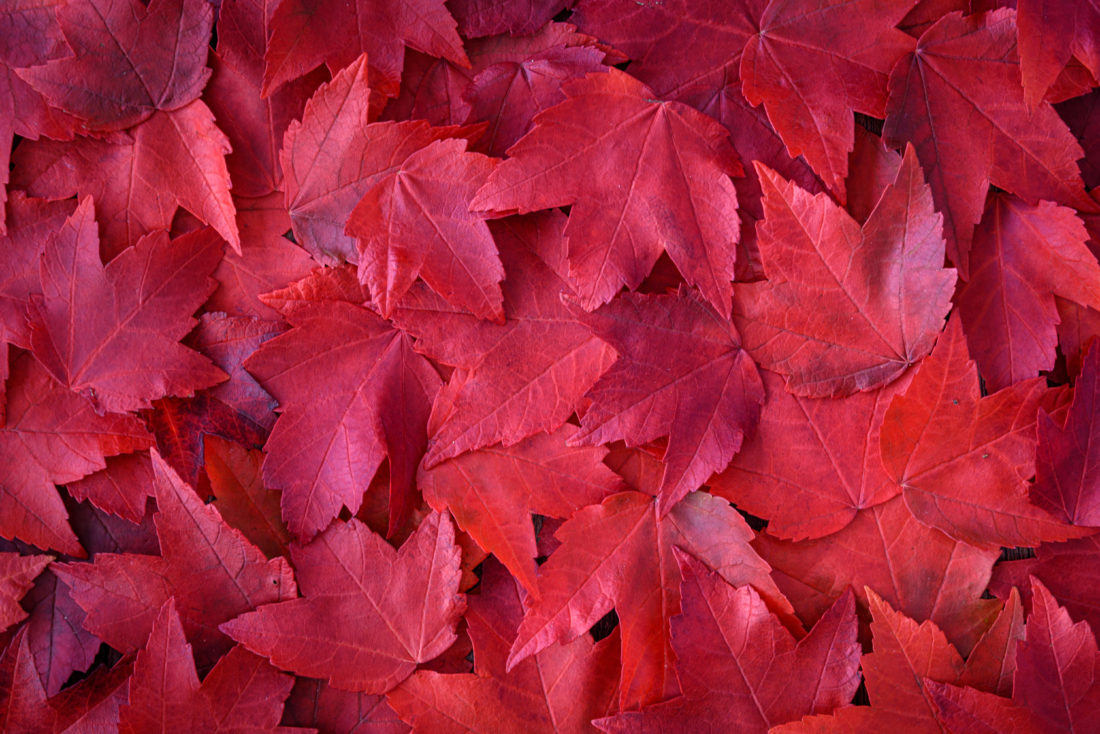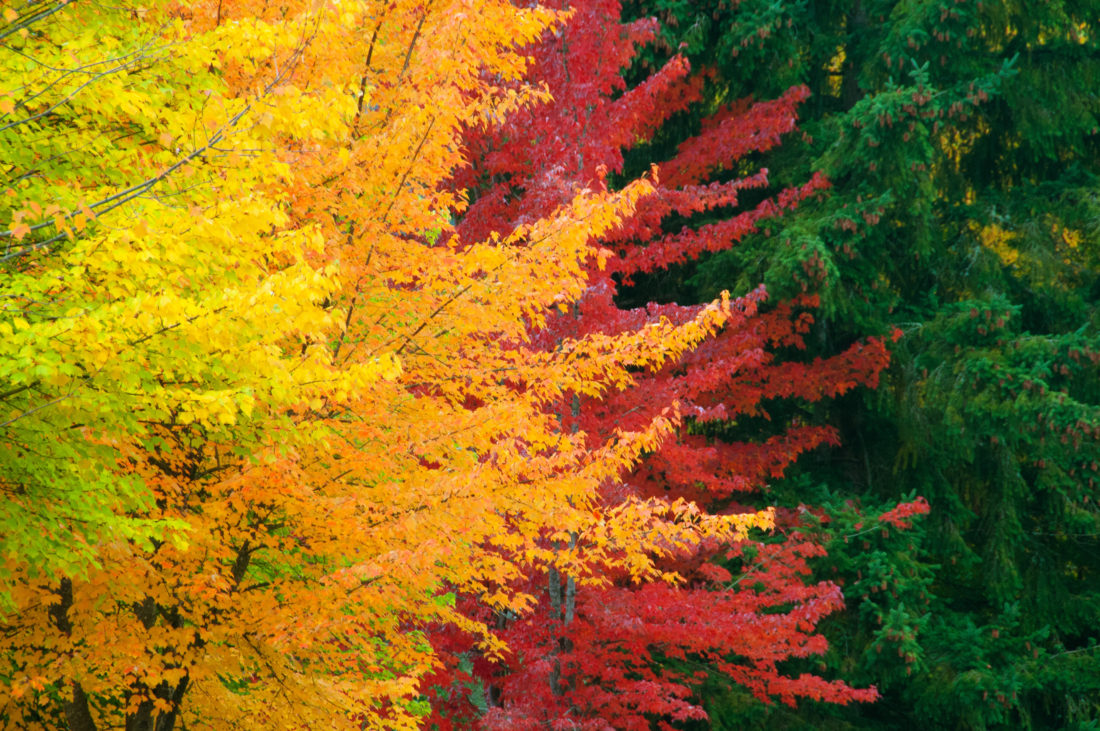“Our fascination with maples, which is the species that turns the reddest of all, is like a mirror to our own evolution,” says David George Haskell, an ecologist at Sewanee: The University of the South in Tennessee and the author of the Pulitzer Prize–nominated The Forest Unseen and The Songs of Trees. Humans—unlike most other mammals—have an extra receptor for seeing red, which helped our ancestors to find fruit and other food sources. “So when that red pops out in fall colors, it really speaks to us,” Haskell says. Beyond their sheer beauty, changing leaves, whether red, yellow, orange, or brown, give clues to what is happening within each leaf, each tree, and each species.
So why do leaves change color in the fall? It mainly has to do with chlorophyll, the pigment that aids in photosynthesis (the process by which trees convert sunlight into energy) and makes leaves green. The warm weather has passed, and with it the optimal time for growth, so a tree withdraws the nutrients allocated to its leaves and relocates them to the rest of its biomass, like the trunk and branches. “It’s an evacuation process,” Haskell says. The magnesium and nitrogen in the chlorophyll are particularly valuable, so it would be costly for a tree to simply drop its green leaves. And as the chlorophyll disappears, we start to see the underlying pigments: yellows and oranges. “In the summer, these carotenoid pigments catch the light that the chlorophyll couldn’t quite grab, and they’re left over after summer,” Haskell explains. “So the yellows that we see are colors that were overwhelmed before by the green.”
Red, however, is a whole different story, and one that scientists are still piecing together. “It’s a different pigment, an anthocyanin, that some trees, like maples, actually make for the fall,” Haskell says. “The yellow was there all along, but the red is added to the leaf.” In some trees, including maples, orange also comes from the combination of the yellow that was there and the red that’s added in the fall.

There are several possible explanations for why some trees produce red. One is that the pigment protects the leaf as the “good stuff” is transferred back into the tree and the leaf no longer has the capacity to absorb the light. Haskell compares it to sunscreen: “When a tree is bombarded with bright, cold light, the red absorbs some of that crazy energy that could fry the leaf’s biochemistry.” This explains why the red is so intense in the Northeast and in some higher elevation and chillier parts of the South. Another explanation is that the red color acts as a signal to other species, attracting birds, for instance, to help disperse the seeds that a tree like a dogwood produces in the fall.
Of course, not all trees produce red. “Ash, for example, turns this beautiful yellow-golden, but for it to go red, it would need to have some genetic changes,” Haskell says. These differences are representative of each species’ unique evolutionary strategy. Deciduous trees maximize their growth in the summer with thin, open leaves with wide surface areas to catch the sunlight, and then drop them in winter. “They’re like sports cars—they can accelerate and go at really high speeds, but that design can’t make it through the winter,” Haskell says. “And then evergreen trees like pines are the all-terrain vehicles; they can keep going in all seasons, but they’re never going to be as fast as a sports car.”
Other trees don’t fit neatly into either category. Some Southern classics like live oaks and large magnolias, for example, stay green through the winter but drop their leaves in the spring. “If you think about where these trees live,” Haskell says, “the winter is not so bad, so they can keep photosynthesizing. They keep their old beat-up leaves, and then grow new ones ready for summer, when they are really going to crank up the speed on photosynthesis.”
For Haskell, walking through a forest in autumn is a reminder of the myriad strategies trees employ to survive and grow. “There are all these personalities. A maple tree has a different personality than an oak tree, which is completely different from a pine tree. Every month, there’s some species that is really good at winning the photosynthesis game, but no species can be the champion in every month.” Meanwhile, we humans (and the red receptors in our eyes), get to enjoy the show.
Related: Tips for seeing the best colors this fall








